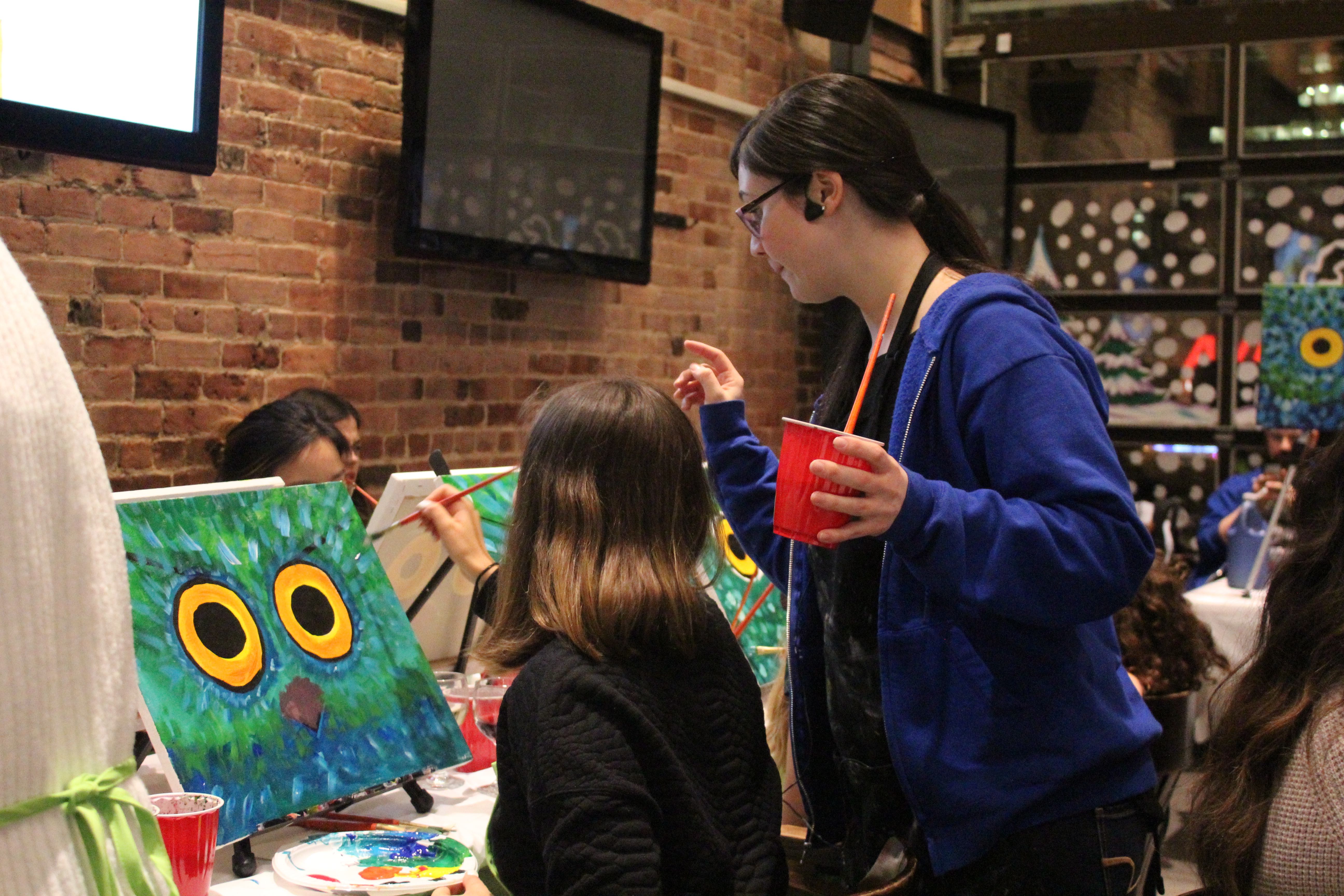Concordi’ART hosts an evening of artistic exploration in collaboration with Paint Nite Montreal
Rather than spend a typical night out at a bar, a group of 20 Concordia students participated in an evening of drinking and painting hosted by Concordi’ART, in collaboration with Paint Nite Montreal, at Peel Pub on March 7.
According to Nathalie Sjarova, the vice-president external of Concordi’ART, the aim of the club is to create a community of people who enjoy both art and business. Concordi’ART’s motto is “building bridges between business and art.”
Alizé Honen-Delmar, the club’s president who is currently on exchange in Australia, created Concordi’ART in February 2017. Sjarova, a marketing student, jumped at the opportunity to be part of the executive team when she saw a post on Facebook seeking candidates.
Concordi’ART aims to encourage and help connect two typically dichotomous worlds. “Art students can learn a lot from business students, but also business students can learn a lot from art students,” Sjarova said. “It’s a very huge asset to be creative in [the business] environment, and at the end of the day, artists are entrepreneurs.”
Last week’s Paint Nite was an opportunity to bring people together to make art. Jessica Di Giacomo and Daniel Torchinsky, the co-producers of Paint Nite Montreal, led the painting tutorial.
A plate with large drops of paint in the primary colours—blue, yellow, red—as well as black and white, four paint brushes and a nicely rolled up apron were set up next to each white canvas sitting on a mini easel.
The goal for everyone was to recreate a painting that illustrated a close-up of an owl’s face. The first step was to outline the eyes with bright yellow and orange, and outline the beak with intimidating and unforgiving black.
Slowly but surely, the canvases went from white to covered in different self-made shades of green and blue.
With “drink-and-dry breaks” between each of the three layers of paint, participants were able to socialize, encourage one another and take a look at all the owls being created.
The final layer of paint required short brush strokes dipped in shades of blue, green and white to create a feather-like texture.
Despite all participants following the same steps and recreating the same painting, there was still room to express creativity. Some participants preferred to blend out the feathers, while others had a distinct ombré effect, going from light green to dark blue. Each eye varied in size from canvas to canvas, and one participant, Nathan Marrache, decided to paint Angry Bird-like eyes.
“It’s amazing how everyone’s painting looks so different even though it’s supposed to be the same,” said Marrache after he looked at everyone’s final paintings.
Paint Nite hosts events almost every day at various venues. More information can be found on their website: www.paintnite.com. Further information about Concordi’ART and any upcoming events can be found on its Facebook page.
Photos by Alex Hutchins
